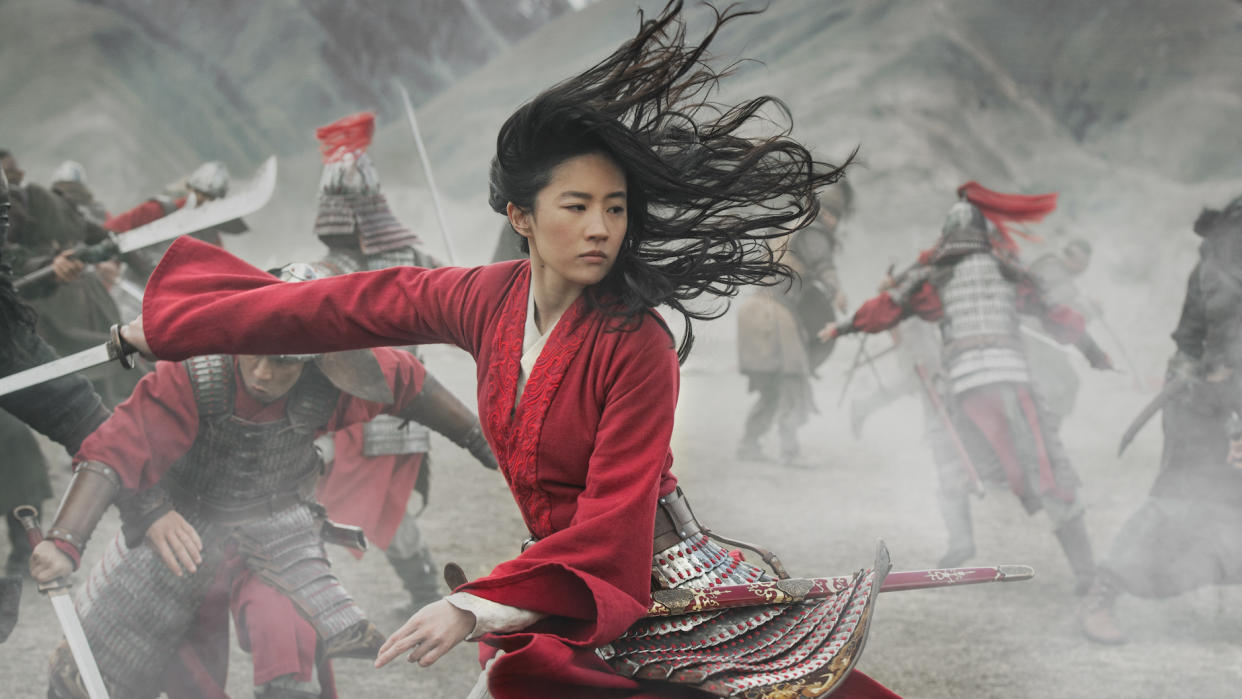Is 'Mulan' based on a true story?

Yahoo Entertainment is committed to finding you the best products at the best prices. We may receive a share from purchases made via links on this page. Pricing and availability are subject to change.
Disney has delivered one of its most lavish live-action remakes yet with its new take on Mulan. Directed by Kiwi filmmaker Niki Caro and starring Liu Yifei as the sword-wielding warrior, it is available on Disney+ today for those willing to fork out a little extra cash to get Premier Access and early reviews have been very positive.
Read more: Disney boss says more movies could skip cinemas
The movie is, of course, inspired by the 1998 animation, but Caro and Disney have spoken extensively in promoting the film about the fact they went back to the source of the story for this adaptation. It’s a mammoth action epic, heavily influenced by wuxia cinema, that lacks musical numbers and anthropomorphic dragons.
The source in question is the Chinese legend of Hua Mulan, which dates back to the sixth century and The Ballad of Mulan. With its 31 rhyming couplets, the poem creates much of the elements of the story we know today. It follows the protagonist as she poses as a man and steps up for military conscription in place of her ageing father, whose only son is an infant. She returns home having served with honour and reveals her true identity to her shocked comrades, with whom she has fought for years.

Since then, the story has been remixed and re-adapted countless times in China and then, more recently, in the West.
The 16th century play Female Mulan Joins the Army Taking Her Father’s Place depicts Mulan as a woman with bound feet, as per a Chinese custom at the time. She unbinds her feet to wear men’s shoes when she joins the army, only to re-bind them when she returns home and marries a man of her family’s choosing. In Romance of Sui and Tang, penned in the late 17th century, the story culminates in Mulan committing suicide rather than become a concubine. That take on the story also introduced fellow female warrior Xianniang, who inspired Gong Li’s villainous sorcerer in the new Mulan movie.
Read more: Fans upset by extra Disney+ cost for Mulan
As for whether Mulan was a real person, Professor Lan Dong of the University of Illinois Springfield says it’s “certainly possible” that a real figure inspired the poem, but not clear.
Writing on the website of the BBC History Magazine, she said: “We do not have existent evidence to prove Mulan is a historical figure who lived during a particular time. However, things are complicated, especially when we consider the likely oral origin of the folk ballad (the earliest written document about her), and how her story has evolved in China (beginning in the fourth to the sixth centuries and still ongoing today).”

Despite the lack of any firm evidence, there are multiple locations in China which claim to be the birthplace of the real Hua Mulan and feature statues, memorials and other monuments devoted to the character. Her legacy also spans to space, with the name of a crater on Venus.
It took until the 20th century for Mulan to become a more well-known figure in the English-speaking world. Most notably, Asian American author Maxine Hong Kingston’s novel The Woman Warrior: Memoirs of a Girlhood among Ghosts introduced the legend to audiences in the States and the book became a text regularly taught in schools — though its portrayal of Chinese culture has provoked passionate debate over the years.
Read more: Everything coming to Disney+ in September 2020
Naturally, the story became far more significant in the lives of Western children around the release of the Disney film in the 1990s, which was of course accompanied by a raft of picture books and other material. With the release of the new Disney adaptation, the story of Hua Mulan has been remixed all over again, bringing this timeless tale to a whole new generation.
Mulan is available to stream on Disney+ now, for an extra Premier Access fee of £19.99 in the UK or $29.99 in the USA.

 Yahoo Movies
Yahoo Movies 
